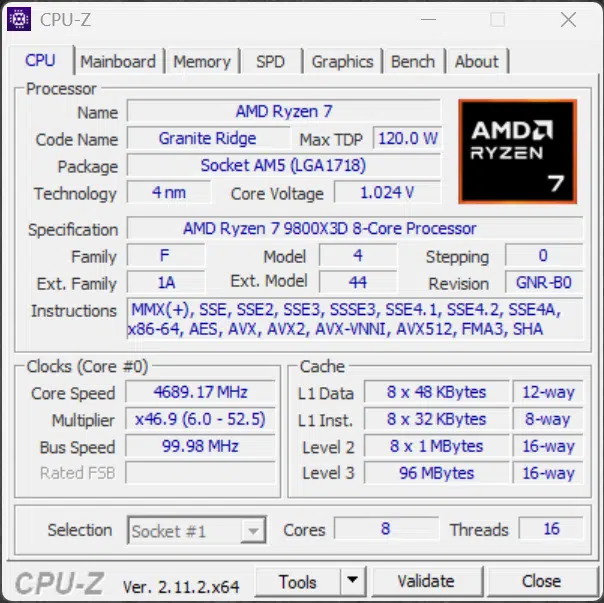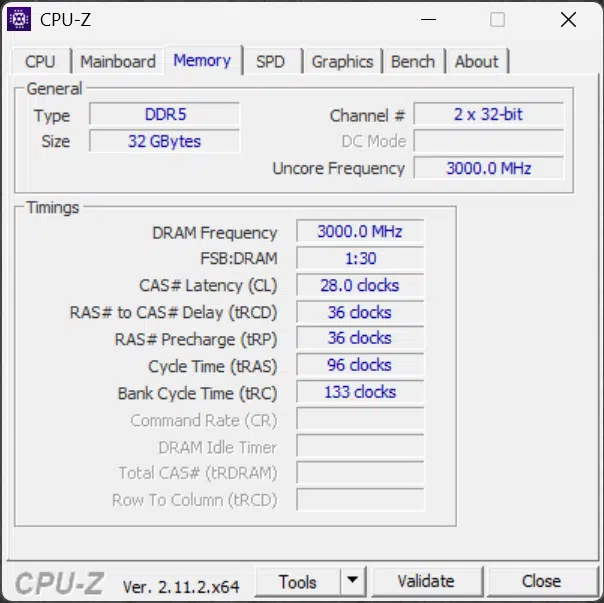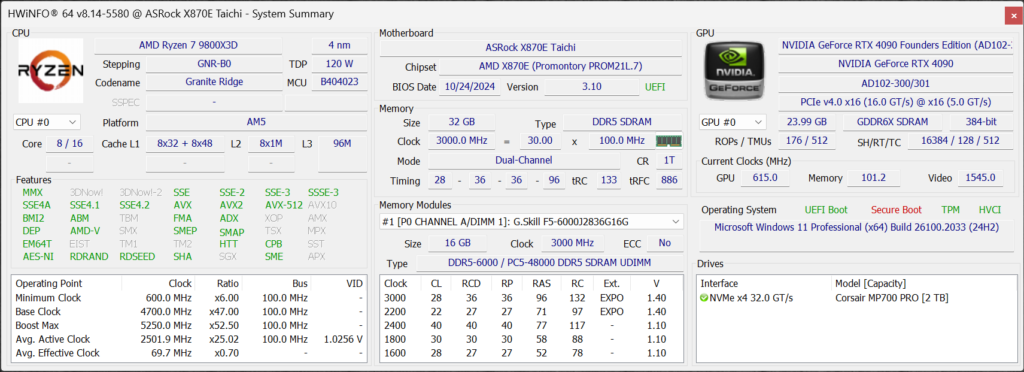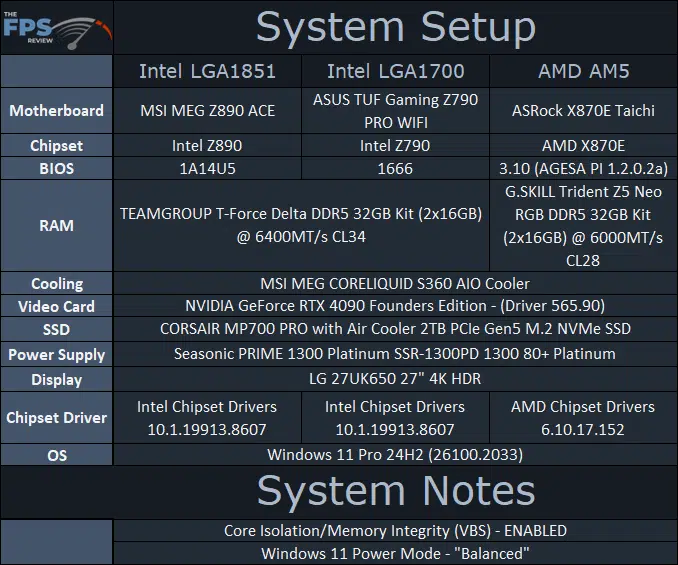Test Setup
For all data WIndows 11 24H2 26100.2033 was used. We do have Windows 11 running in default settings, which means Core Isolation/VBS is turned ON. In addition, we are using the default “Balanced” power mode on all CPUs in Windows. Where noted (on the graphs) the Intel Arrow Lake CPUs are tested with both Balanced (B) and Best Performance (BP) power profile modes.
Our goal in this launch review is to provide a balanced, all-around review, showing the whole picture of multi-threaded and single-threaded workloads for productivity, and gaming. A future follow-up will be a gaming-focused review, with many more games.
AMD Setup



We are using an ASRock X870E Taichi motherboard for all AMD AM5 CPUs being tested. AMD does have a new AGESA version to use for the Ryzen 9000 series X3D CPUs, this is AGESA PI 1.2.0.2a. The new addition is the “a” at the end of the string, so make sure to look for that if you are going to purchase one of these CPUs, and upgrade your BIOS to this new AGESA version. AMD does state that the system will boot on the 1.2.0.2 AGESA, but the new “a” provides optimizations for X3D chips. We are using the latest official BIOS from ASRock, 3.10, which is using the new AGESA 1.2.0.2a.
We are also using G.SKILL Trident Z5 Neo RGB DDR5 32GB memory Kit provided by AMD, which runs at EXPO 6000MT/s and CL28 timings. We have also updated to the latest AMD chipset drivers found on the website, which is 6.10.17.152. Remember, these chipset drivers are important, they provide AMD’s PPM Provisioning Driver and 3D V-Cache Performance Optimizer drivers. We are also running Windows 11 24H2 (26100.2033) for all CPUs.
Intel Platforms
The Intel platforms are tested on a Z790 motherboard and Z890 motherboard for Arrow Lake, using the latest BIOS at the time of testing. All data was collected prior to the launch of Arrow Lake, and the software versions are shown in the table above. The Windows 11 version remains the same on all CPUs, including the 9800X3D.

